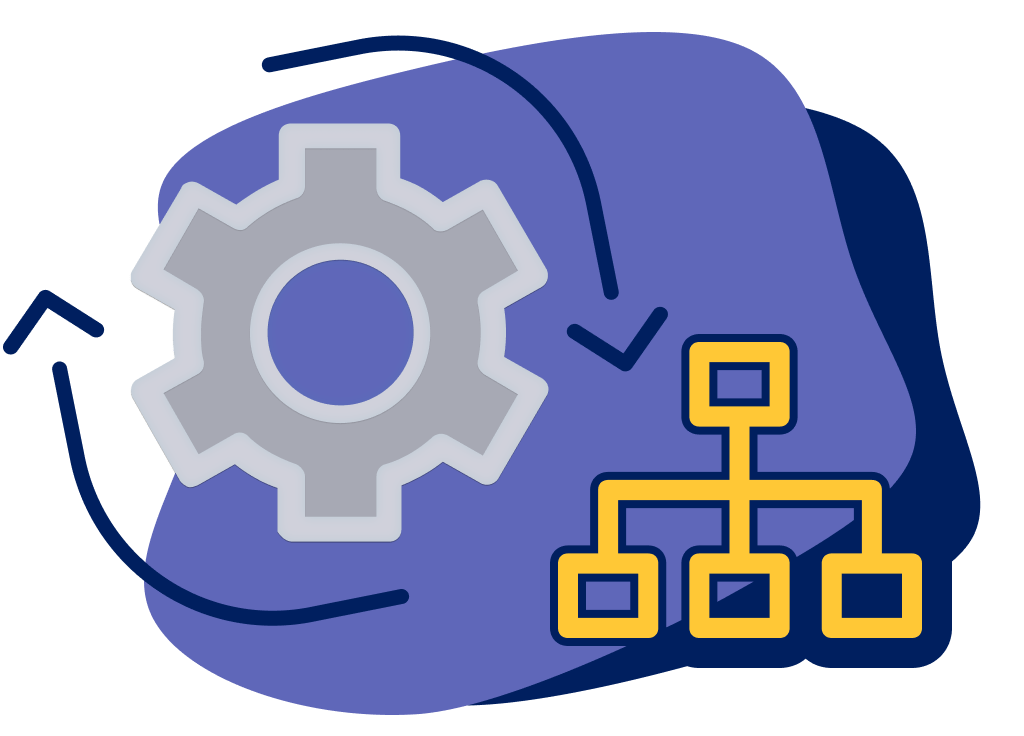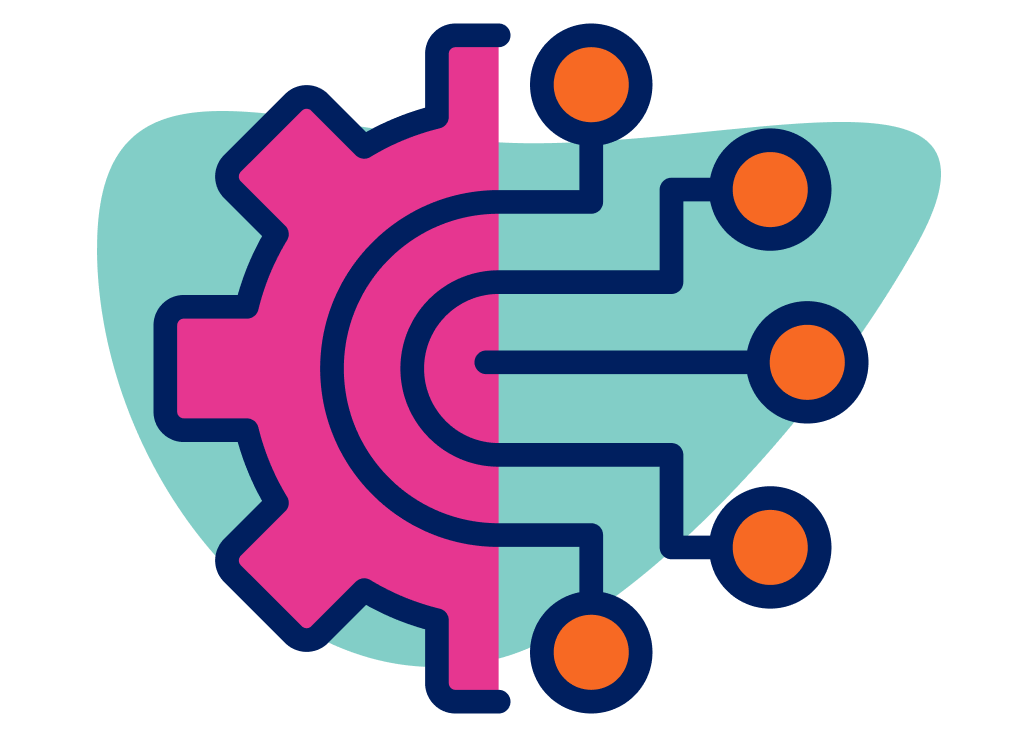
Process automation

What is process automation?
Process automation uses technology to streamline operations, reduce the need for human intervention, and improve efficiency and accuracy.
Automating processes involves integrating disparate systems and breaking down silos for seamless data flow across an organization. Additionally, it’s a critical part of continuous optimization, and core to many organizations’ digital transformation initiatives.
Why is process automation important?
Large organizations grapple with the challenges of managing high-volume, complex operations. Handling intricate processes manually is often inefficient and prone to error. The rapid pace of business today demands quick decision-making and fast execution, which manual processes cannot always support. Furthermore, large organizations are often inundated with vast amounts of data, making management a significant challenge. Process automation emerges as a critical solution, streamlining operations for consistency and accuracy and freeing up valuable resources to focus on strategic initiatives rather than routine tasks. It's not just advantageous, but essential for large organizations that strive to succeed and maintain competitiveness in the current business environment.
Benefits of process automation
- Streamlined resource allocation: Automating processes reduces time and costs in manual operations, allowing for more investment in growth areas like research and marketing.
- Strategic resource utilization: Automation frees employees from routine tasks to focus on strategic activities, enhancing competitive advantage and growth potential.
- Precision in execution: Automation reduces errors, improving the reliability of products and services and leading to increased customer satisfaction and brand reputation.
- Robust compliance and oversight: Consistent and transparent processes make it easier to comply with regulations, reducing legal risks and building trust with customers and partners.
- Flexible process adaptation: Rapidly adjusting processes enables quick responses to market changes and operational challenges, allowing you to maintain continuity while seizing new opportunities.
- Enhanced organizational productivity: Business automation optimizes operations, resulting in faster turnaround, higher-quality output, and improved customer service, all of which drive revenue growth and market position.


How does process automation work?
Process automation solutions use technology to execute and manage tasks and processes that would otherwise require manual effort. Let's imagine an auto manufacturer wants to implement process automation within its manufacturing setting. The auto manufacturer would:
- Identify automation opportunities: The auto manufacturer would use process mining to identify key areas in its supply chain that can benefit from automation, such as inventory management, parts ordering, and supplier communication.
- Implement automation tools: The manufacturer can then deploy a sophisticated workflow management system integrated with robotic process automation and Internet of Things technologies.
- Integrate across the organization: The workflow management system can integrate various aspects of the supply chain, from supplier order management to logistics and warehouse management. This creates a seamless flow of information and materials across different supply chain stages.
- Analyze data and schedule predictive maintenance: The system now collects and analyzes data from various sources, including production lines, quality control, and supply chain logistics. Using this data, predictive models can forecast potential disruptions or maintenance needs in manufacturing equipment, allowing for proactive maintenance scheduling without human intervention.
The result is a more responsive and adaptable manufacturing process.

Explore what's possible with Pega for robotic process automation
What are the different types of process automation?
This involves using software robots or "bots" to automate repetitive, rule-based tasks that are typically performed by humans, such as data entry, form filling, and straightforward customer service operations.
This focuses on automating complex business processes at the organizational level by integrating various systems and applications, automating data flow between them, and managing complex workflows. BPA solutions are useful for supply chain management, CRM, and enterprise resource planning.
This integrates advanced digital technologies like artificial intelligence (AI), machine learning (ML), and RPA to optimize end-to-end business processes, focusing on efficiency, enhanced customer experience, data-driven insights, and improved collaboration in a digital-first framework.
This concerns the flow of tasks and information across various stakeholders, such as automating and optimizing the sequence of activities involved in business processes, from simple approvals to complex operational sequences.
These advanced technologies can be used to automate processes that require decision-making, learning from data patterns, and adapting to new scenarios — think chatbots for customer service, image and voice recognition systems, and predictive analytics.
Challenges of implementing process automation
- Integration with existing systems: Many organizations have legacy systems, and integrating new automation technologies with these can be complex and costly. Ensuring compatibility and seamless data exchange between old and new systems is often a significant hurdle.
- Change management: Automation brings significant changes to an organization's workflow. Managing these changes, including employee apprehension and resistance, requires effective communication and training programs to ensure a smooth transition.
- Skill gaps and training needs: The shift to automated processes often demands new skills from the workforce. Identifying these skill gaps and providing the necessary training can be challenging, especially in organizations with many employees.


Aflac simplifies and automates email processing
See how Aflac leveraged AI-powered email bot technology to improve overall email productivity.

Implementing and scaling process automation
Organizations should start with a clear strategy to implement and scale process automation successfully. This involves identifying key areas that would benefit most from automation, choosing the right tools and technologies, and involving relevant stakeholders. It's also crucial to have a roadmap for scaling automation efforts and ensuring business alignment.
Workflow automation platforms can address these challenges and more. These platforms enable rapid development and deployment of applications with minimal coding, making it easier for organizations to build the tools they need to create custom automation and workflows.
Workflow automation solutions also empower teams to develop solutions that meet specific needs without the lengthy timelines traditionally associated with software development and deployment. This agility is critical for large organizations to adapt to market changes or internal demands quickly.
The future of process automation
The future of process automation in large organizations is closely tied to advancements in artificial intelligence (AI). AI is transforming process automation by enabling automation in more complex, decision-based processes. Machine learning algorithms can analyze vast amounts of data, providing insights that optimize processes further. Integrating AI into process automation tools makes them more intelligent, adaptable, and efficient, setting the stage for unprecedented automation in large organizations.

Frequently Asked Questions about process automation

